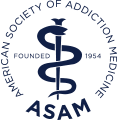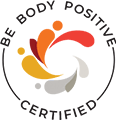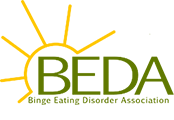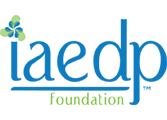When an individual cuts, burns, pinches, pulls out his or her own hair, prevents wounds from healing, or tears skin, it is known as self-injury, self-mutilation, or self-harm. Self-injury comes in many forms as some individuals might punch themselves, hit themselves with an object, run into hard surfaces purposely, or ingest toxic substances.
Understanding Self-Harm
Learn about self-harm
When this behavior first develops, it is often because an individual is attempting to deal with emotional pain or distress. As soon as the physical harm has occurred, those who self-injure tend to feel relieved, though feelings of shame and guilt quickly follow. Despite these negative feelings, self-harm is often used repetitively as an unhealthy means of coping.
Continued self-harm can cause an individual to experience painful consequences. Unfortunately, many people who grapple with the compulsive desire to self-harm also battle with eating disorders. For these individuals, the behaviors linked to their patterns of disordered eating can bring on extensive negative consequences in all areas of their lives. Luckily, there are options available that can help treat both one’s eating disorder and one’s self-harming behaviors. Obtaining this type of professional care can help increase a person’s quality of life by showing him or her how to utilize healthy coping skills that will allow him or her to put an end dangerous behaviors.
Statistics
Self-harm statistics
The actual rates of self-harming behaviors are unknown, as most of those who are afflicted with this disorder tend to execute their behaviors behind closed doors. Some research has shown that an estimated one in seven males and one in five females engages in self-harm tactics.
Causes and Risk Factors
Causes and risk factors for self-harm
While there is not one recognized cause for self-harm, the risk factors of this behavior can be best explained by looking into one’s genetic and environmental backgrounds. Each of these influences, as well as other risk factors, are research based:
Genetic: Self-harm can develop when an individual is going through upsetting symptoms of another mental health condition. Mental illnesses like anxiety and depression are known to have a strong genetic link and can be present in those who are biologically related. Since mental illnesses can be heritable, it is believed that when a genetic predisposition for these illnesses is present, there is a greater risk that an individual will partake in self-harming behaviors.
Environmental: Specific influences from an individual’s environment can bring about emotional or psychological symptoms that tend to be connected to mental illness. Extremely stressful work or home environments can bring on so much upset that one turns to self-harm to cope. Exposure to trauma is another situation that can bring about the onset of these behaviors, especially when one does not have a strong support system.
Risk Factors:
- Lack of sufficient support system
- Having unstable emotions / mood
- Family history of mental illness
- Preexisting mental illness
- Having limited coping skills
- Confusion pertaining to one’s sexuality
- Experiencing the unexpected death of a friend or loved one
- Poor impulse control
- Exposure to trauma / experiencing trauma
Signs and Symptoms
Signs and symptoms of self-harm
Self-harm does not tend to occur in the presence of others. Often conducted in secret, this form of unhealthy coping is hidden from friends, family, and loved ones to avoid any unwanted attention on the issue. If you think that a loved one is partaking in self-harming behaviors, it is critical to take note of the symptoms below and encourage him or her to obtain treatment as soon as possible:
Behavioral symptoms:
- Social withdrawal or isolation
- Wearing pants and/or long-sleeved shirts to conceal wounds
- Declined involvement in activities that were once enjoyed
- Dismissing injuries as accidents
Physical symptoms:
- Cuts
- Burn marks
- Patches of missing hair
- Broken bones
- Scratches or scrapes
- Bruising
Cognitive symptoms:
- Poor concentration
- Intrusive thoughts about wanting to self-injure
- Experiencing a sense of detachment from one’s surroundings
- Inability to focus attention
- Lack of impulse control
Psychosocial symptoms:
- Loneliness
- Pervasive feelings of hopelessness, helplessness, and/or worthlessness
- Guilty feelings
- Defeatist attitude
- Increased feelings of anxiety when one is not able to self-harm
Effects
Effects of self-harm
The effects of self-harm can include both short and long-term effects. In terms of one’s physical health, the consequences listed below can occur if this type of behavior continues:
- Organ failure
- Bones that do not heal properly
- Anemia
- Damage to one’s nerves
- Vital organ damage
- Unintentional death
- Infection
- Hemorrhage
- Scarring or permanent damage to tissues
Other aspects of one’s life can also be negatively affected by self-harm, including an increased risk of the following effects:
- Decline in quantity and quality of relationships with others
- Social withdrawal or isolation
- Increased conflict within interpersonal relationships
- Greater risk for using or abusing substances
- Intrusive thoughts about self-harm
- Overwhelming compulsions to injure oneself
Co-Occurring Disorders
Self-harm and co-occurring disorders
Self-harm is often a symptom of another mental health condition. For example, those who struggle with eating disorders often battle with the compulsion to harm themselves. In addition to eating disorders like binge-eating disorder, anorexia, and bulimia, the following mental health conditions are known to be connected to self-harming behaviors, and are often an additional focus of treatment when an individual decides to attempt to overcome his or her condition:
- Borderline personality disorder
- Substance use disorders
- Depressive disorders
- Bipolar disorder
- Obsessive-compulsive disorder
- Posttraumatic stress disorder
- Generalized anxiety disorder
- Panic disorder

























